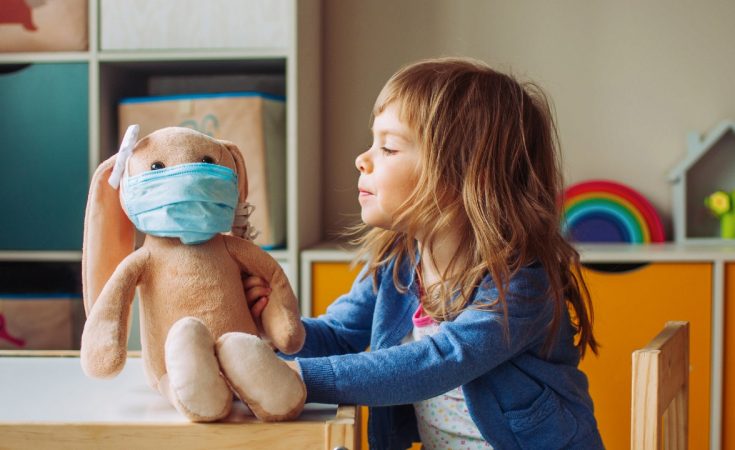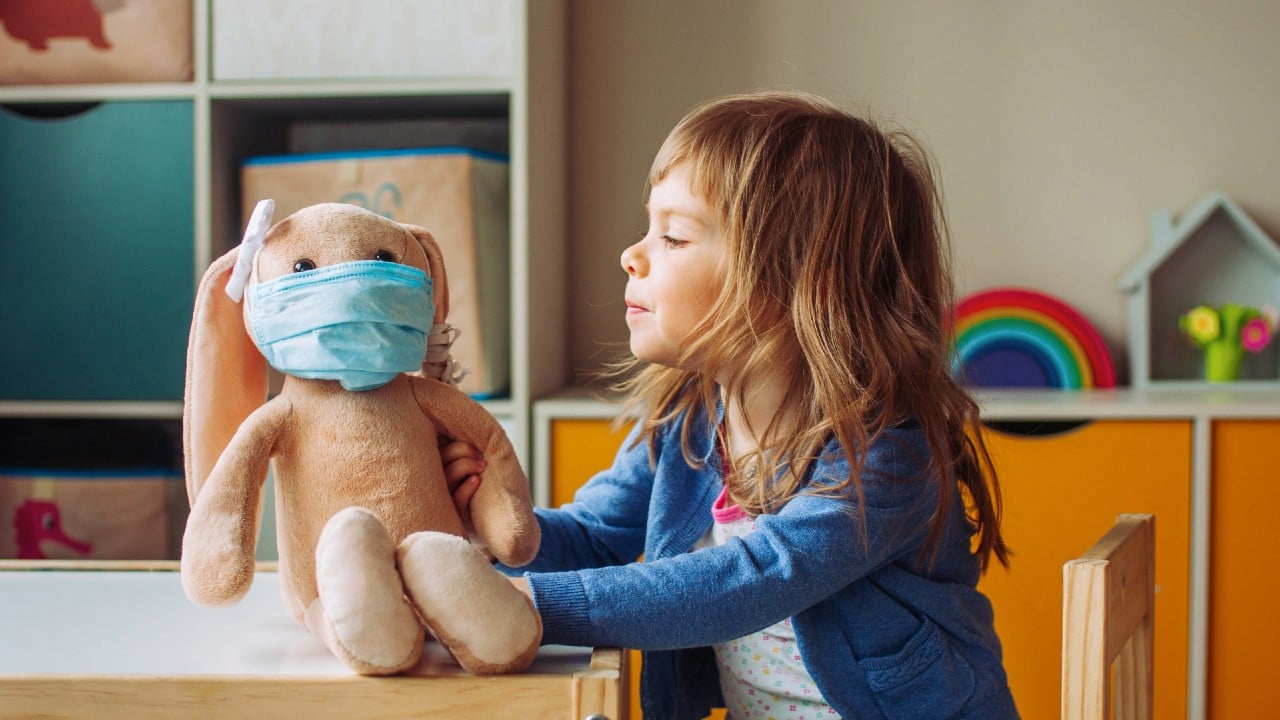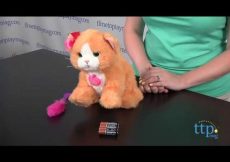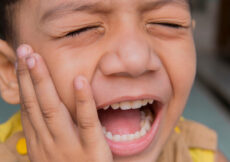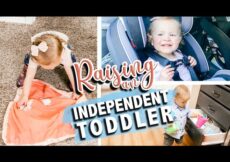In the pandemic that keeps on going, Omicron’s infectiousness means most kids and families will be exposed. But that doesn’t mean we can’t be prepared. Here are things you can do to protect your kids and your community amid Omicron’s surge.
Vaccinate your kids if they’re eligible
“Vaccination is the most effective intervention right now to reduce severity of COVID-19 infections and prevent complications, including Multisystem Inflammatory Syndrome in Children,” says Jennifer Kwan, a family physician in Burlington, Ontario. MIS-C is a rare but serious inflammatory condition which can be life-threatening, and unvaccinated kids who get COVID-19 are at increased risk. COVID-19 infections in children may also trigger new onset diabetes or symptoms of long COVID.
While some parents have been hesitant to vaccinate their children—even if they themselves are vaccinated against COVID-19—there are exponentially more benefits to vaccination than risks, says Janine McCready, an infectious disease specialist in Toronto. “In the U.S., we’ve now seen 8.7 million doses in the 5 to 11 age group with very low rates of any serious adverse effects. There were 12 reported cases of myocarditis and when they looked at the data, none had been admitted to hospital and 8 had fully recovered.” In Canada, nearly 500,000 vaccine doses have been given to kids aged 5 to 11 to date with no reports of severe reactions and no children admitted to hospital as a result of the vaccine.
McCready emphasizes that for every additional person who has vaccine protection—kids and adults alike—community risk is lowered around them. This can help keep seniors, pregnant women and infants, immunocompromised individuals, kids under 5 who can’t be vaccinated and other high risk groups safe. “If a pregnant mom isn’t vaccinated, there’s a much higher risk [to her and the baby]. Vaccinate everyone around you, especially if you have young ones at home or are pregnant.”
Consider moving up your kid’s second dose
The National Advisory Committee on Immunization (NACI) officially recommends 8 weeks between first and second doses of the COVID-19 vaccine for the 5 to 11 age group. However, a second shot of the vaccine is approved by Health Canada after just 21 days, as this was the interval used in the study. The rationale for the eight week wait is that there is some evidence in adults that it may result in lengthier immunity to the virus and a reduced chance of myocarditis (a rare and treatable side effect). However, many parents (including some medical professionals) have chosen to book a second dose after 21 days in order to give their children a higher level of protection as they head back to class.
So, when should you book that second shot for your school-aged child? “It’s a good question,” McCready acknowledges. “In terms of the long term protection, eight weeks makes sense—but in the middle of this Omicron surge, it also makes sense that families want to get that second dose in sooner.” She says that both options are safe for kids, and the risk and benefits are not astronomically different, so she would not promote one strategy over the other.
However, not all provinces are allowing parents to shorten the interval between shots, so this option is not available to all families. In some provinces, like Ontario, parents can request a reduced interval between doses but must consent to the shorter timeline.
Upgrade your kids’ masks
Masks are a key layer of prevention but recommending a specific mask for kids is tricky for several reasons, McCready explains. “The challenge is that it’s a huge equity issue,” she says. “For most families, buying N95s is not even a remote possibility. So it’s hard to give that as a blanket recommendation.”
It’s also important to remember that fit is key. An N95 that’s way too big for your kid’s face isn’t going to be helpful, for example. That said, a well-fitting N95 or KN95 can provide good protection. (If you do want to explore N95 or KN95s for your kid, we have a list of retailers selling kid-sized versions here.)
A medical mask (those blue surgical ones we’re all so familiar with now) is also a good choice if it fits well (if you’re not sure how it should fit, here’s a good resource). If these options aren’t available to your family or the fit doesn’t work for your child, a three layer cloth mask with a disposable filter is a great option. Many retailers who sell cloth masks sell disposable filters that fit their products, and generic options are available through many health and safety supply stores. You can also layer masks—for example, putting a cloth mask over a medical mask to help it fit more snugly—or adjust the straps as needed.
“The best mask is one they can keep on, can put back on after they’ve had a snack, and it has to fit well,” McCready says. Every mask provides some protection and support, and it’s the culmination in the classroom.” Meaning, the more kids have high quality, well-fitting masks on, the better off everyone in that classroom is.
This government website is a great source for assessing the quality of your child’s mask.
Use rapid tests if you have access to them
PCR testing is no longer accessible to all Canadians, which has put Rapid Antigen Tests (RATs) in high demand. That said, rapid tests are expensive to purchase, and it can be challenging to get your hands on a free RAT in certain provinces (let alone have an ongoing supply).
If you do have RATs on hand, they can be useful in identifying or confirming COVID-19 cases at home. They’re easy to use, even on kids, and can be an excellent preventative tool by identifying cases and stopping community spread. A positive result should be read as a true positive, whereas a negative test just means there isn’t a high level of COVID-19 viral load present at that moment in time (essentially, you don’t have the virus OR you do but it’s too soon to get an accurate reading). Knowing this, taking two rapid tests 24 hours apart will give a more accurate result than one test alone.
You may have seen doctors and epidemiologists on social media encouraging people to swab their throat as well as their nasal cavity when taking a rapid test. While there hasn’t been a study on how this strategy impacts the detection of Omicron, it may work. “There was one study with PCR swabs using a saliva sample and the nose, and it did pick up the virus sooner, so there is plausibility with that, but anecdotally, we’re hearing it works,” McCready says.
Limit close contacts outside of school and work
A few months ago, it felt like we were on our way out of the pandemic—case numbers were significantly lower, vaccination uptake was good and people felt comfortable gathering again. However, Omicron has thrown us all for a curve, forcing individuals and families to reassess what they’re comfortable with—and, how to best protect themselves and their loved ones.
“Risk is a gradient that increases with the number of social contacts and duration of interaction,” Kwan notes. “It’s also compounded by vaccination status, proper masking, ventilation, activity type, and prevalence of COVID-19 in the local community. For example, a prolonged indoor exercise group activity is much higher risk than hiking, masked and outdoors.”
After so many months of isolation from our loved ones, it can be difficult to scale back on good times and close contacts. Unfortunately, that’s what may be (temporarily!) required to beat this wave. “When I think about my first and most important priorities, it’s my family and keeping them in school and minimizing disruption,” McCready says. “This is not going to last forever and this is the most spread in the community we’ve ever had in the pandemic, so if people can restrict their contacts outside of school, it will minimize the introductions into school.”
So what about indoor playdates, extracurriculars and other non-essential activities? “Omicron is incredibly infectious and I think now is the time, for a few more weeks, to hold off on indoor playdates and extracurriculars,” McCready says, emphasizing that this is a temporary situation. “The spread is out of control right now and we really need to prioritize school for once. If everyone in your community does that, it will make school or childcare safer.”
Be prepared for illness
No matter how careful parents are, some kids are going to get COVID-19. Knowing this, it makes sense to keep some supplies on hand to help deal with symptoms of the virus at home. Kwan recommends connecting with your family doctor or paediatrician if your child has symptoms and reminds parents to watch for “red flag” symptoms that would warrant urgent medical attention. “This would include difficulty breathing, decreased fluid intake, lethargy, dehydration, high persistent fever, confusion, and severe vomiting or diarrhea.”
Fortunately, most cases can be treated at home. “In most children, especially if they’ve been vaccinated, COVID is usually quite mild and short-lived,” McCready says. “If they’ve had a dose of the vaccine, they will probably bounce back quickly.” She recommends having some Pedialyte on hand to keep kids hydrated, plus regular fever reducers like Tylenol or Advil. If your child has a sore throat, honey is a great source of relief for kids over the age of 1. Cough syrup and lozenges are not ideal for young kids, whether they have COVID-19 or a simple cold.
McCready also stresses that parents should know where to go if they have concerns. “Can you get a virtual appointment with your doctor or emergency room? Where can you take them if they do become ill and you’re worried? It’s rare for kids to develop severe illness, but we’ve seen it happen and we want parents to know how to deal with it.”
It’s a lot for parents to take in, but remember that this pandemic will end. And until then, you’ve got this.

